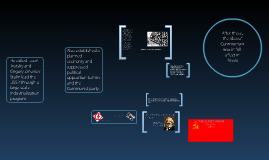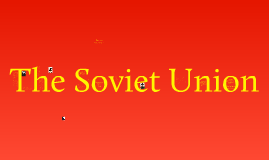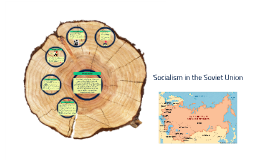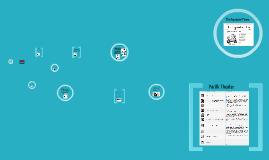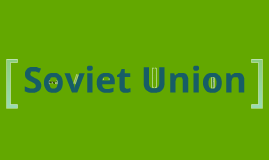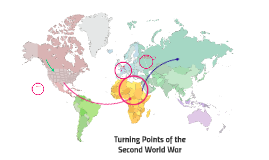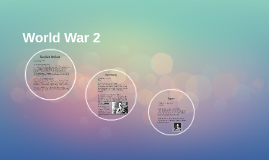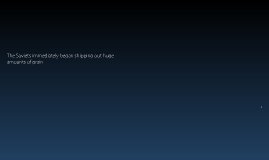Soviet Union
Transcript: Tsar Nicholas II overthrown as emperor, and Tsarist government turns into a "democracy." Stalin and Trotsky become leaders of the revolution, and say that everyone is equal Profits, food, and all material goods are shared Everyone works to make the same profit; not much motivation to work Leaders became corrupt with power and Stalin kicks Trotsky out, declaring him an enemy of the revolution Working class soon becomes mistreated and used by their abusive rulers; Forced in line by KGB and Secret Police Propaganda for working Class Property Ownership Limited democracy given to the people Large country (8,650,000 sq. miles), so there were many regions to cover Authoritarian style government that was centralized Presidium of the Supreme Soviet were an elite group who made most of the decisions General public had little to no say in the government Introduction Socialism in the Soviet Union was sparked by a lack of food and necessities. Money and energy was spent fueling military campaigns against the Germans in WWI. This left thousands of people hungry and angered with the government. Revolution was afoot. Outcome of Revolution Social Safety Net "Russian Revolution of 1917." Encyclopædia Britannica. Encyclopædia Britannica Online School Edition. Encyclopædia Britannica, Inc., 2013. Web. 13 Nov. 2013. <http://archive.school.eb.com/eb/article-9064488>. "Union of Soviet Socialist Republics." Encyclopædia Britannica. Encyclopædia Britannica Online School Edition. Encyclopædia Britannica, Inc., 2013. Web. 13 Nov. 2013. <http://archive.school.eb.com/eb/article-9105999>. "Communist Party of the Soviet Union." Encyclopædia Britannica. Encyclopædia Britannica Online School Edition. Encyclopædia Britannica, Inc., 2013. Web. 13 Nov. 2013. <http://archive.school.eb.com/eb/article-9024991>. By Kobi Bhattacharyya Everything is owned by the public Government became corrupt and had personal luxuries, while others had only public goods General public could buy goods and services with the small amount of money each person received February 1917 Food and protection were free to everyone Healthcare provided, but protection diminished over time Everyone was required to work, as resources provided to them were reward for working This method of labor gave the working class incentives to work, while it only hurt the upper class. Education was provided to everyone Joseph Stalin Socialism in the Soviet Union Political System Bibliography Over Time: Upper class becomes fed up with little to no luxuries that they're used to; either move to other countries or refuse to participate Working class mistreated, misguided, and used People became lazier, as work was not a necessity anymore in order to earn a living Government corrupted, and ended up as the people they were trying to avoid Secret Police and KGB harass the public into conforming to "societies rules" NOT EQUAL






